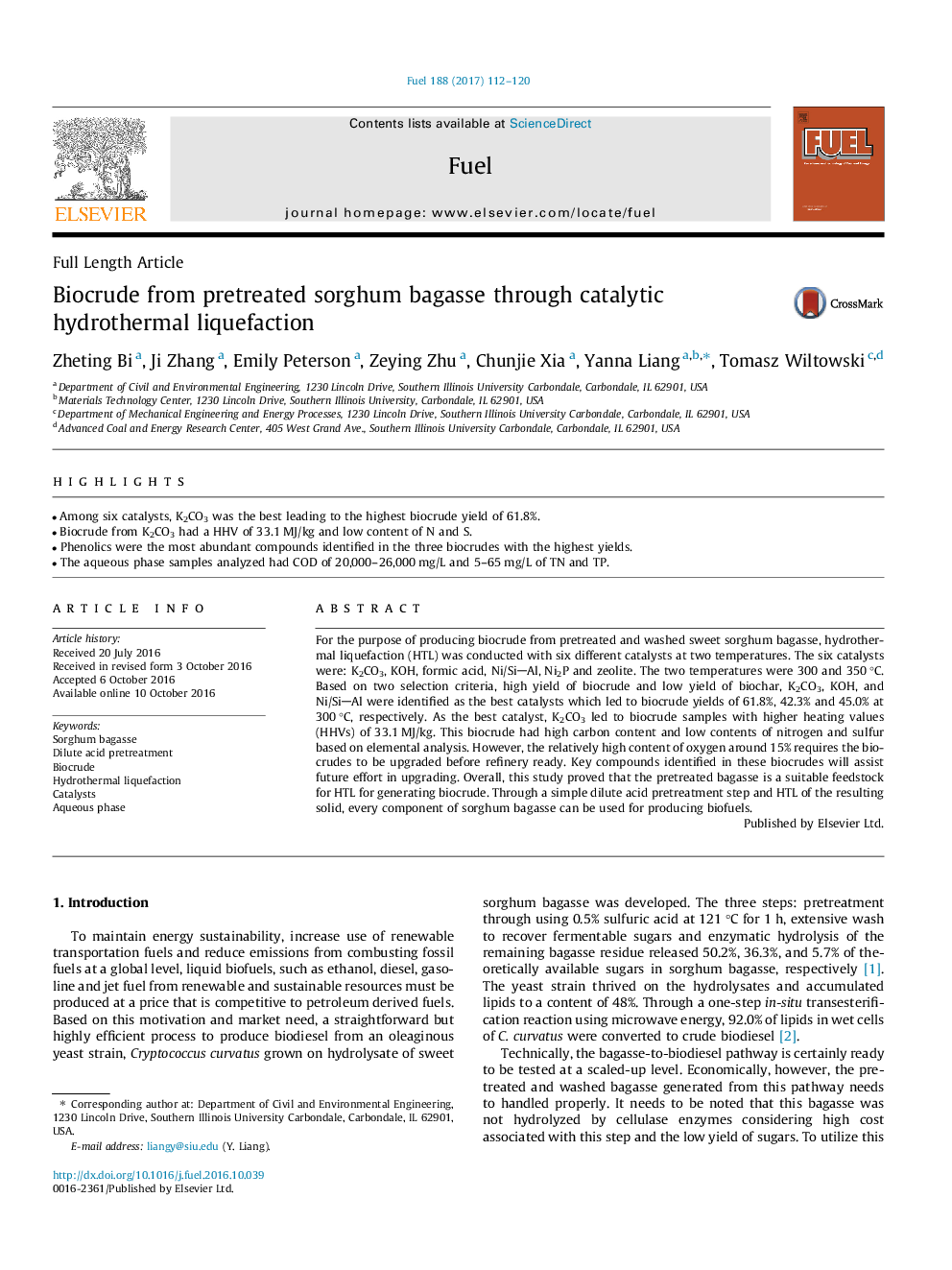| Article ID | Journal | Published Year | Pages | File Type |
|---|---|---|---|---|
| 6475743 | Fuel | 2017 | 9 Pages |
â¢Among six catalysts, K2CO3 was the best leading to the highest biocrude yield of 61.8%.â¢Biocrude from K2CO3 had a HHV of 33.1 MJ/kg and low content of N and S.â¢Phenolics were the most abundant compounds identified in the three biocrudes with the highest yields.â¢The aqueous phase samples analyzed had COD of 20,000-26,000 mg/L and 5-65 mg/L of TN and TP.
For the purpose of producing biocrude from pretreated and washed sweet sorghum bagasse, hydrothermal liquefaction (HTL) was conducted with six different catalysts at two temperatures. The six catalysts were: K2CO3, KOH, formic acid, Ni/SiAl, Ni2P and zeolite. The two temperatures were 300 and 350 °C. Based on two selection criteria, high yield of biocrude and low yield of biochar, K2CO3, KOH, and Ni/SiAl were identified as the best catalysts which led to biocrude yields of 61.8%, 42.3% and 45.0% at 300 °C, respectively. As the best catalyst, K2CO3 led to biocrude samples with higher heating values (HHVs) of 33.1 MJ/kg. This biocrude had high carbon content and low contents of nitrogen and sulfur based on elemental analysis. However, the relatively high content of oxygen around 15% requires the biocrudes to be upgraded before refinery ready. Key compounds identified in these biocrudes will assist future effort in upgrading. Overall, this study proved that the pretreated bagasse is a suitable feedstock for HTL for generating biocrude. Through a simple dilute acid pretreatment step and HTL of the resulting solid, every component of sorghum bagasse can be used for producing biofuels.
